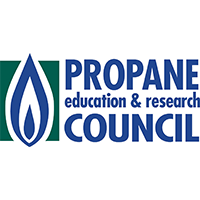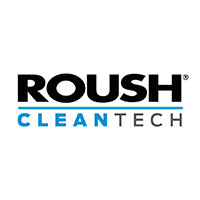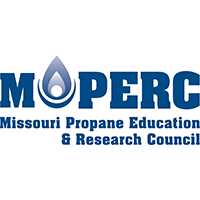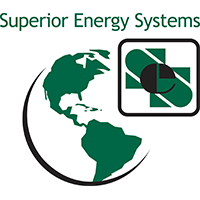Today, more than 1.3 million kids in the U.S. ride to and from school in buses fueled by propane, known as autogas when used as a vehicle fuel. Over 1,000 school districts operate propane buses. Learn why so many districts are adopting this clean-operating, cost-reducing technology.
Cost Savings
- On average, propane costs 40 to 50 percent less than typical school bus fuels, such as diesel.
- Over 1,000 school districts are saving 20 to 50 percent on a cost-per-mile basis.
- Propane buses have no cold-start issues and warm up quickly, which save school districts both time and money on equipment and staff.
- School buses fueled by propane lower total cost of ownership by saving on fuel, fluids and filters.
- Oil changes are simpler and less expensive.
- No complex after-treatment devices are needed, like diesel emission filters, diesel particulate filters, diesel oxidation catalyst or turbo chargers.
- Installing a propane fueling station is less expensive than any other type of fueling station.
- More than 90 percent of the nation’s propane supply is produced domestically, with an additional 7 percent from Canada, making it stable and readily available.
Health and Safety
- A 2019 Georgia State study found that diesel school bus fumes drive down test scores. The study correlated increased academic performance when children were exposed to lower levels of school bus emissions. Student test scores improved in both math and English.
- Diesel is a carcinogen identified by the World Health Organization. Children are more sensitive to diesel exhaust because they breathe faster.
- Compared with diesel, propane engines operate about 50 percent quieter, which increases safety and decreases driver fatigue.
- The driver’s ability to hear students and emergency vehicles while a bus is in motion is a huge safety advantage for everyone on board.
- Propane fueling is a closed-loop system. With propane, drivers and maintenance technicians avoid the frequent spills and odors that other fuels may exhibit on their clothes and hands.
- The Environmental Protection Agency classifies propane as a non-contaminant. It is a nontoxic, non-carcinogenic and non-corrosive fuel.
Emissions Reductions
Knocking Out NOx
- Propane is a clean energy source that helps protect the environment.
- Propane is naturally lower in nitrogen oxides (NOx) than diesel and gasoline.
- According to a monumental West Virginia University study released in 2019, propane school buses reduce NOx by at least 95 percent. In real world applications of stop-and-go bus driving, diesel emissions are 34 times higher than with propane.
- NOx are highly damaging emissions that are federally regulated due to their negative impact on human health and the environment.
- NOx can cause damage to respiratory airways and cause eye, skin and respiratory tract irritants.
- Breathing NOx can cause damage and scarring of the airways.
- NOx contributes to numerous environmental problems such as acid rain, climate change, deteriorated water quality, ground-level ozone (smog), air toxics and particulate matter.
Global Impact
Reduced Particulate Matter
- Propane reduces greenhouse gases that can hurt our planet.
- School buses fueled by propane emit virtually zero particulate matter.
- According to the Lancet Commission, particulate matter is associated with increased risk of cardiovascular disease, pulmonary disease and kidney disease. It contributed to about 4.2 million premature deaths in 2015.
- With propane school buses, students, drivers and school staff aren’t exposed to the harmful particulate matter found in diesel exhaust, which is known to aggravate asthma.
- A U.S. Department of Veterans Affairs study found that the global toll of diabetes attributable to particulate matter air pollution is significant. The study states that reducing exposure to particulate matter will yield substantial health benefits.
Less Environmental Impact
- Buses fueled by propane emit fewer greenhouse gases, nitrogen oxides and total hydrocarbon emissions when compared to diesel buses.
- The ultra-low NOx propane engine is 90 percent cleaner than EPA’s current emissions standard. (ROUSH CleanTech manufactures the 0.02 g engine for the Blue Bird Vision Propane bus.)
- At 0.02g NOx, it takes 10 propane buses to emit as much NOx as one modern clean-diesel bus.
In the News
- Clean Bus Replacement Plan Awards School Bus Contractor for Alternative Fuel Implementation
- West Virginia University Study Finds Propane School Buses Dramatically Decrease Harmful Emissions
- North Penn School District Unveils New Blue Bird Propane-Fueled School Buses
- Blue Bird Delivers Record 15,000th Propane Bus
- Kansas City Public Schools Goes Green, Adds 155 Propane-fueled Blue Bird School Buses
- ROUSH CleanTech Develops First Available Propane Autogas Engine that is 90-Percent Cleaner than National Emissions Standards
- West Virginia University Study Finds Propane School Buses Dramatically Decrease Harmful Emissions
- School District's Propane Buses Lead to Widespread Benefits
Propane School Buses Nationwide
- Missouri School District Locks in Propane at 68 Cents per Gallon
- School District Choices Help Community's Air Quality
- School District Invests in Cost-Effective, Emissions-Reducing Propane Buses and Stations
- Propane Schools Buses Save Missouri School District over $40K
- Propane School Buses Reduce Transportation Department Maintenance Costs
- The Total Cost of Ownership for Propane School Buses
- One Fourth of Georgia School District’s Bus Fleet Powered by Propane Autogas
- One Year of Propane Autogas: Alternative Fuel Buses Drive Down Costs
- Transforming Schoolyards with Propane
Stay Connected
Want to learn more? Stay informed with the latest news about propane school buses.
Email: info@propanebusnews.com




